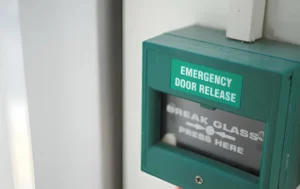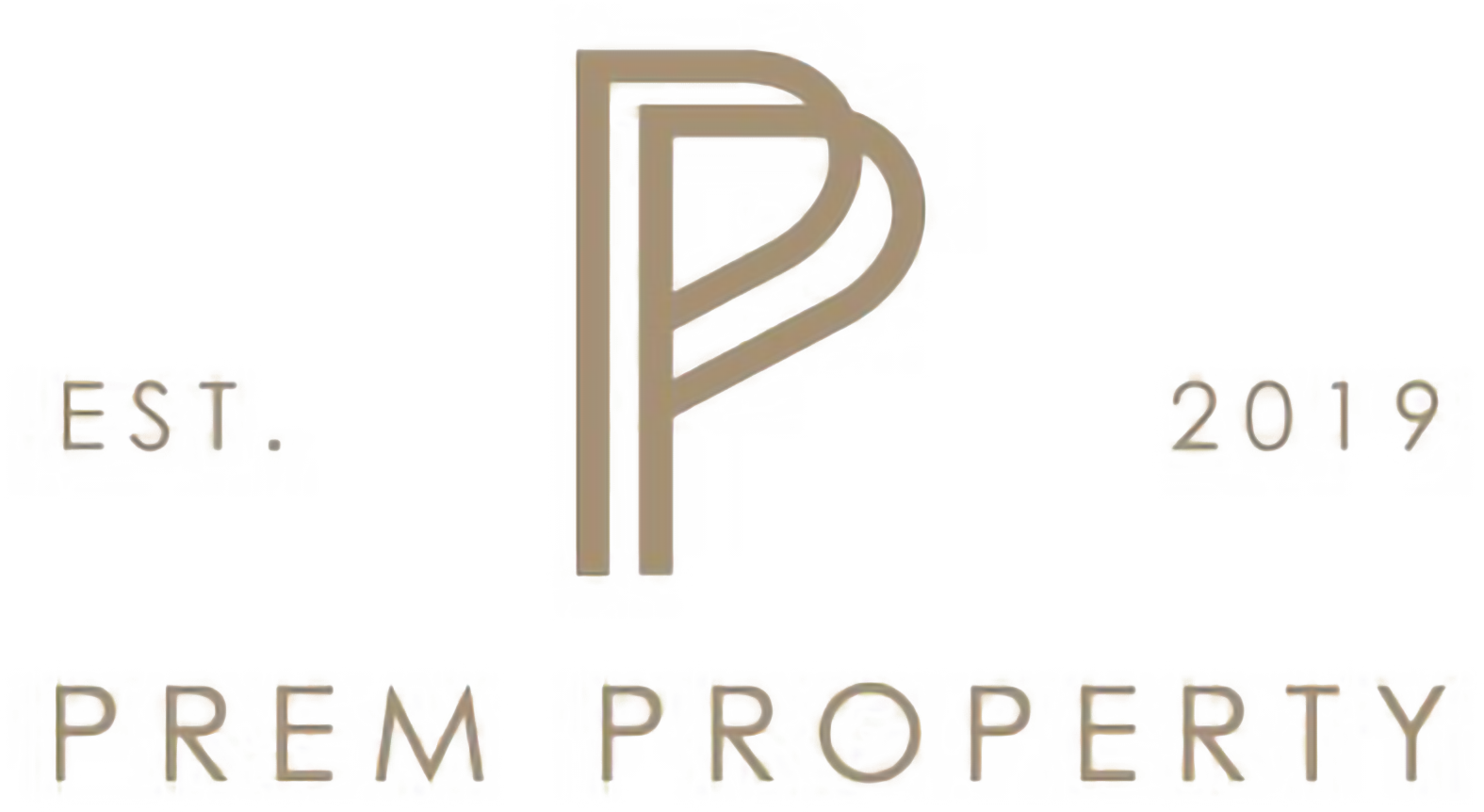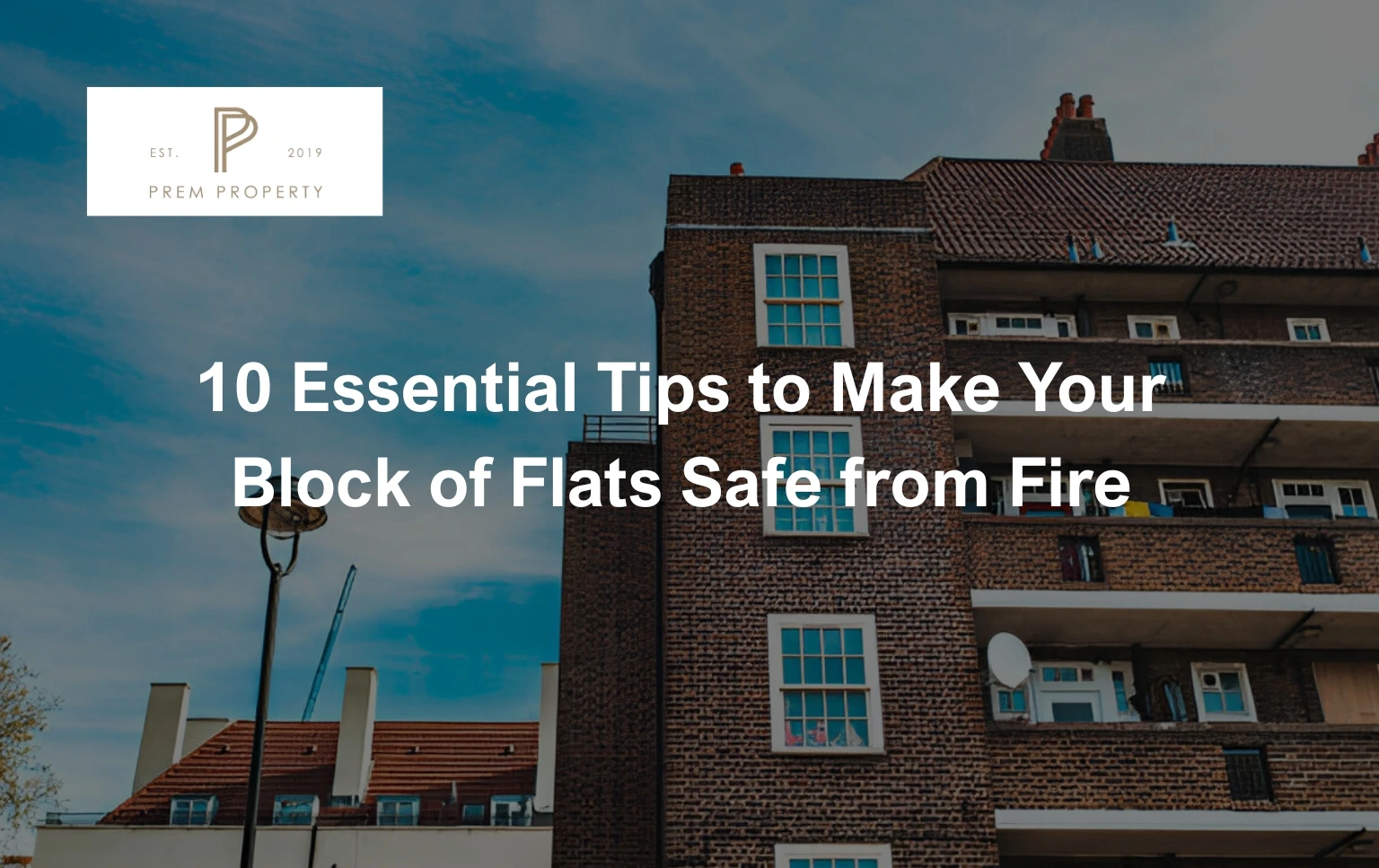Fire safety in residential buildings has become increasingly crucial, particularly following high-profile incidents that have highlighted the devastating consequences of inadequate fire protection measures. For residents, landlords and property managers of blocks of flats, implementing comprehensive fire safety strategies isn’t just a legal requirement—it’s a moral imperative that protects lives and property.
Living in a block of flats presents unique fire safety challenges that differ significantly from those faced by single-family homes. The interconnected nature of apartment living means that a fire in one unit can quickly affect neighbouring properties and escape routes. However, with proper planning and preventive measures, you can significantly reduce fire risks and ensure everyone’s safety.
1. Maintain Clear Escape Routes at All Times
The most critical aspect of fire safety in any block of flats involves keeping escape routes completely clear and accessible. Residents often underestimate how quickly corridors, stairwells and landings can become cluttered with personal belongings, bicycles, or storage items.
Property managers must enforce a strict zero-tolerance policy regarding items stored in common areas. Even seemingly harmless objects like doormats, plant pots or children’s toys can create significant obstacles during an emergency evacuation. Furthermore, these items can serve as fuel for fires, accelerating their spread through the building.
Regular inspections should occur monthly, with immediate removal of any unauthorised items. Residents need clear communication about storage policies, including designated areas where personal items can be safely kept without compromising escape routes.
Emergency lighting systems require regular testing to ensure they function properly during power outages. Install battery-backed lighting along all escape routes, with particular attention to stairwells where natural light may be limited.
2. Implement Rigorous Fire Door Management
Fire doors represent the first line of defence against fire and smoke spread in a block of flats. These specialised doors must close automatically and form an effective seal to prevent smoke and flames from entering escape routes or spreading between units.
Property managers should conduct comprehensive fire door inspections every six months. This inspection process includes checking self-closing mechanisms, examining door seals and frames for damage and ensuring gaps around doors don’t exceed 4mm. Residents must understand that wedging fire doors open or tampering with closing mechanisms creates deadly risks for everyone in the building.
When residents replace their entrance doors, they must use certified fire-resistant doors that meet current safety standards. Many property owners make the mistake of installing standard doors that lack proper fire resistance ratings, unknowingly compromising the entire building’s safety system.
Training residents about fire door maintenance creates a collaborative safety culture. They should report damaged doors immediately and understand why these doors must remain closed when not in use, particularly during nighttime hours.

3. Install and Maintain Comprehensive Smoke Detection Systems
Modern smoke detection systems in blocks of flats require strategic placement and regular maintenance to provide adequate protection. Unlike single-family homes, apartment buildings need interconnected systems that can alert residents throughout the building while supporting the “stay put” strategy commonly employed in well-compartmentalised buildings.
Individual flats should have smoke alarms in hallways and living areas, with heat detectors in kitchens where smoke alarms might trigger false alarms from cooking activities. These systems should connect to a central monitoring system that can alert emergency services automatically.
Monthly testing ensures all detection equipment functions properly. Replace batteries annually, even in hard-wired systems that have battery backups. Consider upgrading to smart smoke detectors that can send alerts to property managers’ mobile devices, enabling faster response times.
Common area detection systems serve different purposes than those within individual flats. These systems typically operate automatic smoke vents rather than evacuation alarms, supporting the building’s overall fire strategy rather than contradicting it.
4. Establish Robust Electrical Safety Protocols
Electrical faults cause a significant percentage of residential fires, making electrical safety a top priority in any block of flats. Property managers must ensure that common area electrical systems undergo professional inspection and testing every five years, with more frequent checks if problems arise.
Residents should receive education about electrical safety within their own flats. This includes avoiding overloaded sockets, using appropriate extension cords, and unplugging appliances when not in use. Charging devices overnight presents particular risks, especially with phones, tablets and electric scooters that should charge in well-ventilated areas away from escape routes.
Common electrical rooms and meter cupboards require fire-resistant doors that close automatically. These areas should remain free of storage materials and have adequate ventilation to prevent overheating. Regular maintenance schedules should include cleaning electrical equipment and checking for signs of wear or damage.
Emergency lighting systems depend on reliable electrical supply and backup power systems. Monthly functional tests and annual duration tests ensure these critical safety systems will operate when needed most.
5. Implement Strict Storage and Housekeeping Standards
Effective housekeeping practices dramatically reduce fire risks throughout a block of flats. Combustible materials stored in common areas can accelerate fire spread and block escape routes, creating deadly conditions during emergencies.
Property managers should establish clear policies about what residents can and cannot store in common areas. While some well-managed buildings may allow low-risk items like small doormats or wall decorations, most items should be prohibited entirely. Regular enforcement prevents gradual accumulation of materials that could compromise safety.
Refuse storage requires particular attention, as bins and recycling containers can provide fuel for arsonists. These containers should be stored away from the building structure, particularly windows and ventilation openings where fire could spread into the building. Secure storage areas or compounds help prevent unauthorised access while maintaining proper separation distances.
Cleaning schedules should include inspection of hidden areas like under staircases, storage cupboards, and basement areas where unauthorised storage might occur. Photographic documentation helps track compliance and provides evidence if enforcement action becomes necessary.
6. Develop and Communicate Emergency Action Plans
Every resident in a block of flats should understand exactly what to do if fire breaks out, whether in their own unit or elsewhere in the building. This knowledge can mean the difference between life and death during critical moments when decision-making becomes difficult.
The “stay put” strategy applies to most modern blocks of flats, where residents should remain in their units unless directly affected by fire or instructed to leave by emergency services. However, residents must understand when this strategy applies and when immediate evacuation becomes necessary.
Clear, visible fire action notices should be posted throughout common areas, providing step-by-step instructions for different scenarios. These notices must be updated regularly and translated into multiple languages if the building houses residents who speak different languages.
Regular fire drills help residents practice emergency procedures, though these must be carefully managed to avoid encouraging unnecessary evacuation that could increase risks. Instead, focus on education sessions that explain fire safety principles and individual responsibilities.
7. Ensure Proper Ventilation and Smoke Control
Smoke often kills before flames reach victims, making effective smoke control essential in any block of flats. Proper ventilation systems can prevent smoke from accumulating in escape routes while allowing emergency services to access affected areas safely.
Natural ventilation through openable windows in stairwells provides basic smoke control, though automatic opening vents (AOVs) offer superior protection. These systems use smoke detectors to trigger ventilation automatically, removing smoke from escape routes without requiring manual intervention during emergencies.
Mechanical ventilation systems require regular maintenance to ensure proper operation. This includes cleaning filters, testing automatic controls and verifying that backup power systems function correctly. Professional maintenance contracts help ensure compliance with safety standards and manufacturer recommendations.
Residents should understand how ventilation systems work and avoid actions that could compromise their effectiveness. This includes not blocking vents or windows and reporting any problems with automatic systems immediately.
8. Maintain Building Compartmentalisation
Fire compartmentalisation forms the foundation of fire safety in blocks of flats, preventing fire spread between units and maintaining the integrity of escape routes. This system of fire-resistant walls, floors, and ceilings creates safe zones that support the “stay put” strategy.
Regular inspection of compartmentation involves checking for breaches around service penetrations where pipes, cables, or ducts pass through fire-resistant barriers. Standard builders’ foam doesn’t provide adequate fire resistance, so these openings require proper fire-stopping materials installed according to manufacturer specifications.
Renovation work poses particular risks to compartmentalisation integrity. Property managers must ensure that contractors understand fire safety requirements and use appropriate materials and techniques when creating new openings or modifying existing ones.
Roof voids require special attention, as fire can spread horizontally through these spaces if compartment walls don’t extend properly through them. Professional surveys can identify potential problems before they compromise building safety.

9. Control External Fire Risks
External areas around blocks of flats can significantly impact fire safety, either by providing fuel for fires or creating security vulnerabilities that increase arson risks. Proper management of these areas requires ongoing attention and community cooperation.
Refuse storage areas should be located away from the building structure, with particular attention to preventing access to windows, vents or other openings. Secure storage reduces arson risks while proper placement prevents fire spread into the building. Regular collection schedules prevent accumulation of combustible materials.
Landscaping choices can either increase or decrease fire risks. Avoid planting highly combustible vegetation near the building, and maintain appropriate clearance distances around emergency access routes. Regular maintenance prevents accumulation of dead vegetation that could fuel fires.
External storage areas, including bicycle sheds and garden storage, require fire-resistant construction and separation from the main building. These structures should not block emergency access routes or create additional fuel sources near the building.
10. Establish Professional Maintenance and Inspection Schedules
Systematic maintenance and inspection programs ensure that all fire safety systems continue functioning effectively throughout a block of flats. These programs must cover both common areas and coordination with residents regarding their individual responsibilities.
Monthly inspections should cover basic safety checks including escape route clearance, door functionality, and emergency lighting tests. These routine checks help identify problems early before they compromise safety systems.
Annual professional inspections provide more comprehensive evaluation of fire safety systems. Qualified contractors should service fire detection systems, test emergency lighting for full duration and inspect fire doors for continued effectiveness. Documentation of these activities demonstrates compliance with legal requirements.
Resident education programs should run continuously, with particular focus on new residents who may not understand the building’s fire safety systems. Annual updates ensure everyone stays informed about any changes to procedures or systems.
Emergency contact systems enable rapid response to fire safety problems. Residents should know how to report issues outside normal working hours, and property managers should have arrangements for emergency repairs that could affect life safety.
A Safer Tomorrow: Why Fire Safety Matters
Implementing these ten essential fire safety tips requires commitment from both property managers and residents in any block of flats. Success depends on understanding that fire safety isn’t just about compliance with regulations—it’s about creating a culture where everyone takes responsibility for protecting their neighbours and community.
Regular review and updates of fire safety measures ensure they remain effective as buildings age and circumstances change. Investment in proper fire safety measures, while requiring upfront costs, provides invaluable protection for the most precious asset of all: human life.
Remember that fire safety regulations and best practices continue evolving as we learn from past incidents and develop new technologies. Stay informed about current standards and don’t hesitate to seek professional advice when questions arise about your building’s fire safety measures.
The peace of mind that comes from knowing your block of flats has comprehensive fire safety measures in place benefits everyone in the community. Take action today to implement these essential tips and create a safer living environment for all residents.

